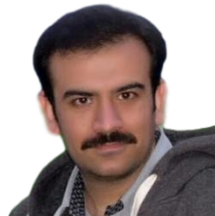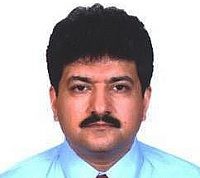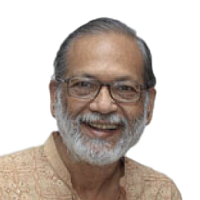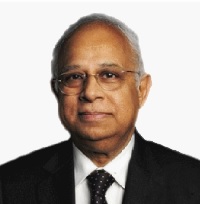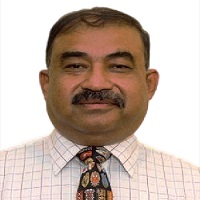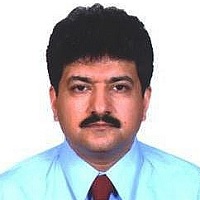(Exclusive): With Russia repeatedly hosting conferences on Afghanistan and with the US, under the Trump administration, signaling its intentions to increase the current level of troops in Afghanistan, dynamics of conflict are changing and are likely to leave a strong impact on the region.
Clearly, Russia is trying to insert itself in the country’s peace-process for one simple reasons: anything that happens in Afghanistan leaves an impact on the entire region bordering it, including the Central Asian States known as Russia’s “under belly.” Most importantly, it is the prospect of a long-term US military presence in the country that has motivated Russia to step in and steer the curse of action to a point where the US might not be able to dictate things all alone.
Russia is clearly perturbed by the US military presence in Afghanistan—a fact that Russian president Putin’s envoy to Afghanistan, Zamir Kabulov, did share in his recent interview. Hence the start of a Russian-led dialogue, which is as much aimed at bringing peace as at tackling the increasing threat of the self-styled Islamic State in Afghanistan.
Russian military campaign in Syria has done a lot of damage to the ISIS. Its emergence in Afghanistan therefore poses a direct threat to Russian internal security and makes its involvement in the country an essential foreign policy objective.
While Russian led dialogue includes six states, including India and Pakistan, it is facing two major challenges that the former needs to overcome to achieve any meaningful results.
The first challenge relates to the presence of both India and Pakistan in the process. Both of them hold diametrically opposite views with regard to the future political framework of Afghanistan. Of particular importance, in this behalf, is the question of the Taliban’s inclusion in the mainstream political structure.
While India has opposed their inclusion, Pakistan sees in them a potential ally who must be made part of the system to avoid Indian domination. Unsurprisingly, both India and Afghanistan took a hard line, in the Moscow conference, on the question of the Taliban’s inclusion in reconciliation efforts, thus opposing the dominant counter-view coming from Russia, China and Iran.
It was ironic that the Moscow conference happened at a time when Afghanistan-Pakistan ties have hit a new nadir. As such, while Ashraf Ghani had urged Pakistan during the Heart of Asia conference to act against sanctuaries inside Pakistani territory, these days Pakistan is busy hitting sanctuaries inside the Afghan territory (read: Pakistan has upped its ‘war on terror’) to target those groups which have recently hit Pakistan through suicide attacks, killing over hundred.
The challenge for Russia is, therefore, to bring these conflicting views to the point of agreement and pave the way for a broader consensus to emerge on who should be included and excluded.
So far, Russia has kept both the US and NATO out of the process, thereby largely continuing its Syrian policy here in Afghanistan too. This exclusion has, as was expected, raised questions about the composition of the conference and the impact it can yield.
The strongest objection unsurprisingly came from Afghanistan itself, which continues to bank on the US for both military and economic aid and hopes that the Trump administration would give a fresh boost to it.
Already Trump has hinted that he would increase the current level of troops in Afghanistan in order to halt the `deteriorating level of country’s security.’
While the 8,400 US troops in Afghanistan, down from a peak of 98 thousand, mean that the US remains militarily dominant in the country, Moscow’s shift towards the Taliban has certainly stirred the US policy makers into re-thinking their draw-down strategy. For one thing, the US views Russia’s reach to the Taliban as threatening to its interests and potential co-operation between them (Russia and Taliban) could be fatal for the its war in Afghanistan. Hence, the imperative of increasing troops to checkmate Russian influence.
Afghanistan is, therefore, gradually turning into a (proxy) territory where interests of multiple regional and extra-regional powers are converging and diverging. The configuration thus taking place puts Russia, China, Iran and Pakistan in one bloc and India, US, NATO countries and Afghanistan in the other.
The war in Afghanistan has, therefore, changed over the years and can no longer be simply defined as part of the US led global `war on terror.’ What erodes its erstwhile status is the fact that major powers like China and Russia don’t see the Taliban as “terrorists” or posing real or potential threats to their interests. What they see as threatening is the emergence of ISIS and long-term US presence.
On the larger geo-strategic scale, their involvement is part of a larger agenda they are following in terms of creating a bulwark against the West in the region, stretching over West, South and Central Asia. It is in this wider context that emerging fault lines in Afghanistan become important and are fast changing the dynamics of conflict.
While China has already established direct contacts with the Afghan Taliban, Russia’s relations with Pakistan have also considerably warmed up and early signs of military co-operation between both countries are very positive.
Moscow has lifted a ban on arms sales to Islamabad and will deliver four Mi-35M attack helicopters to Pakistan in 2017. It will soon finalize a $2 billion natural gas pipeline agreement with Islamabad. In addition to it, they also conducted their first-ever joint military exercises in Pakistan, much to the consternation of New Delhi.
Pakistan, which has the ability to influence Afghanistan’s internal political dynamics to a great extent, therefore is quite likely to see eye to eye with Russia on the question of the Taliban’s inclusion in the peace process and in Afghanistan’s political system, should a deal be finalized in the years to come.
That a deal can take place is not entirely out of the question. Already the Afghan government has signed a deal with an erstwhile notorious warlord, Hekmatyar. Although once considered a “terrorist”, Hekmatyar is now a political actor and an ally of Kabul.
The Ghani-Hekmatyar deal has been seen as a model for other deals that Afghanistan needs in the future—and given the fragmentation the Afghan Taliban have suffered since the death of Mullah Omar, there is every possibility that some splinter groups may start finding it ‘profitable’ to negotiate and get in the mainstream politics through a political deal.
Russia, Pakistan and China are seemingly working on this line and it is through this process that they aim at countering both the rising threat of ISIS and long-term US military presence. The new “nexus”, led by Russia, is therefore changing the dynamics of Afghan war. Challenges notwithstanding, the fact alone that Russia and China are fully into it—something that wasn’t there until two years ago—is largely leaving the US unable to arbitrarily steer the course of events to its sole advantage.
Salman Rafi Sheikh is an independent journalist based in Pakistan. His areas of interest include politics of terrorism, global war on terror, ethno-national conflicts, foreign policies of major powers, application and consequences. He can be reached at [email protected]


